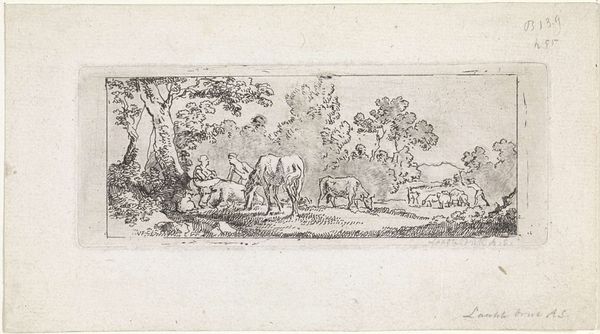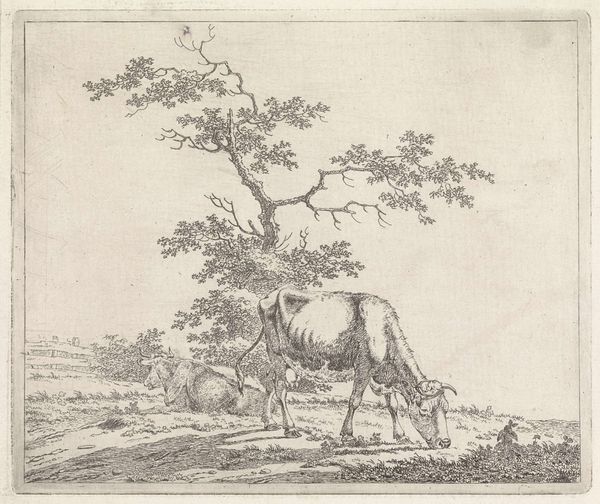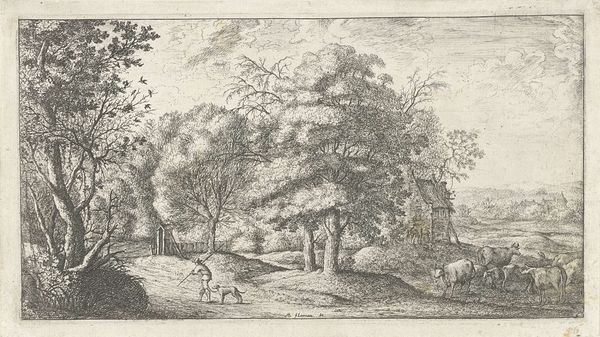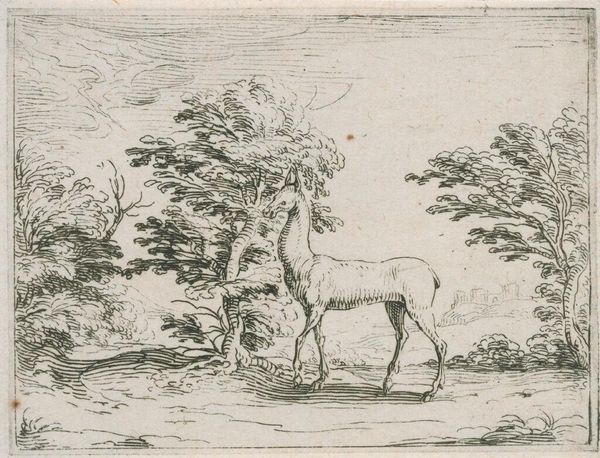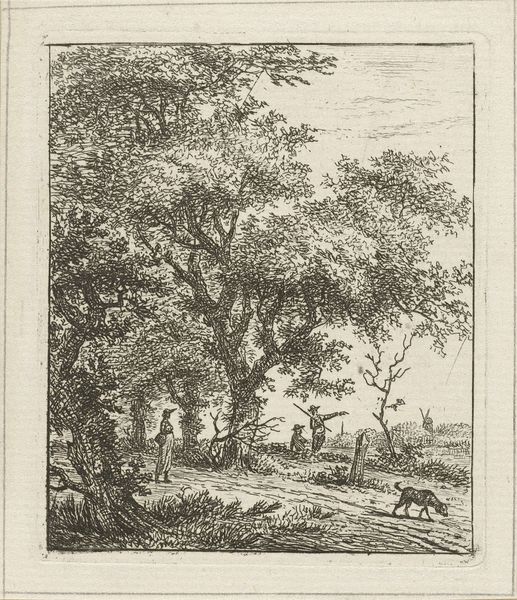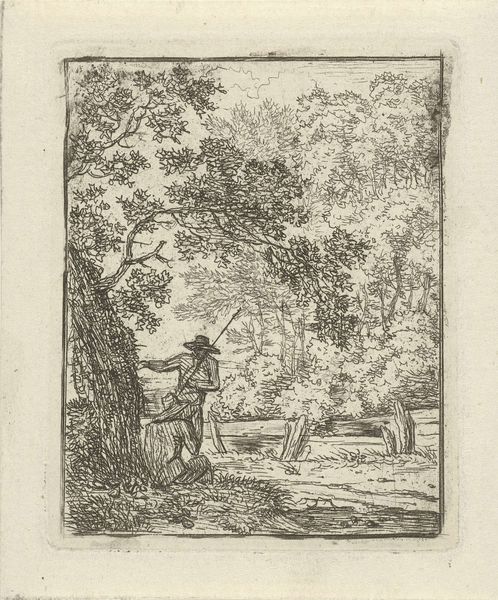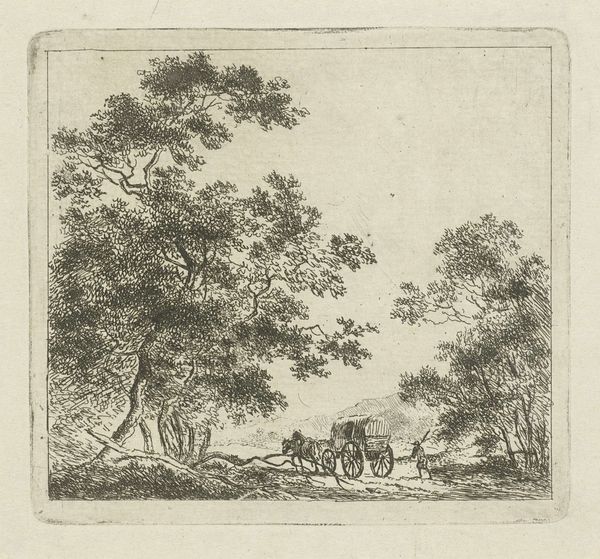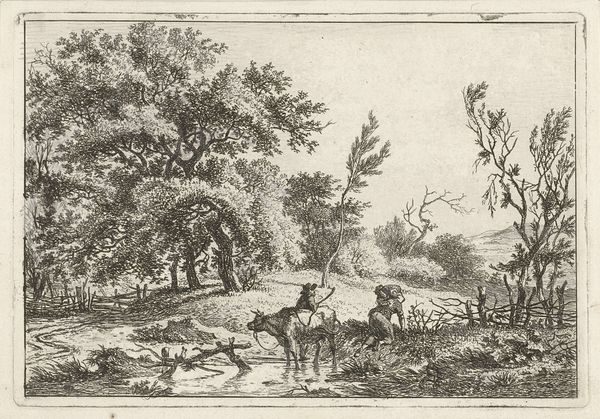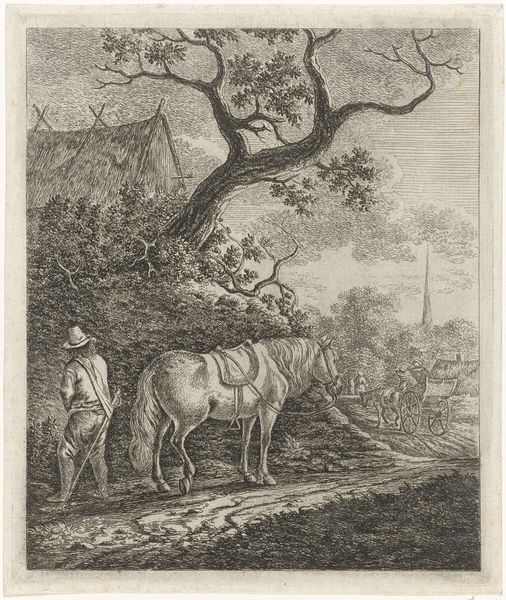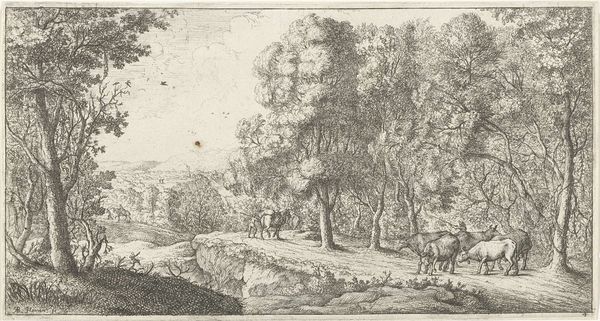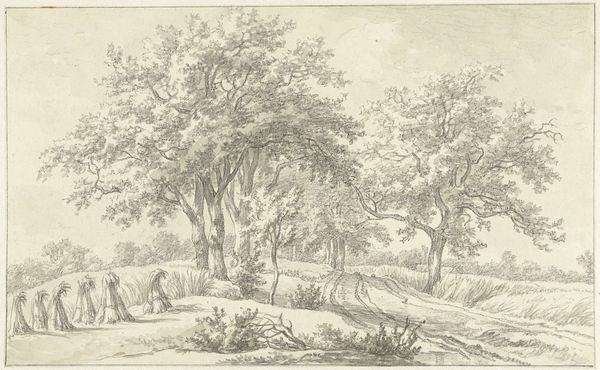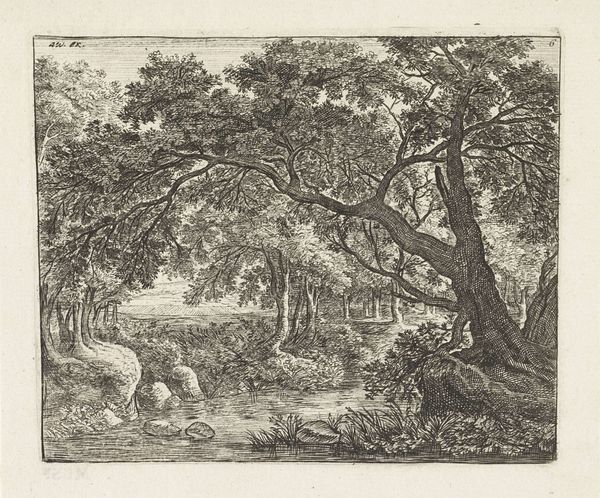
drawing, ink
#
drawing
#
aged paper
#
mechanical pen drawing
#
pen sketch
#
old engraving style
#
sketch book
#
landscape
#
personal sketchbook
#
ink
#
pen-ink sketch
#
pen work
#
sketchbook drawing
#
sketchbook art
#
realism
Dimensions: height 65 mm, width 86 mm
Copyright: Rijks Museum: Open Domain
Hermanus Fock made this etching, “Landschap met twee koeien,” or “Landscape with two cows,” using a metal plate, likely copper, and acid, sometime before 1822. Look closely, and you’ll see how the artist used fine lines to create this pastoral scene, imbuing it with a sense of depth and texture. Etching is an indirect process, a skilled tradition lying between craft and fine art. The artist covers the plate with a waxy, acid-resistant ground, then scratches away lines to expose the metal. The plate is then immersed in acid, which bites into the exposed lines, creating grooves. Ink is applied to the plate, filling the grooves, and then the surface is wiped clean. Finally, paper is pressed against the plate, transferring the ink and creating the print. The etching process allows for fine detail and delicate lines. The lines create a sense of light and shadow, giving the landscape a three-dimensional quality. Fock's etching captures a moment of rural life, with the cows peacefully grazing in a serene landscape. This speaks to the value placed on agricultural labor and the beauty of the natural world. Appreciating the skill and labor involved in etching reminds us to question traditional art hierarchies.
Comments
No comments
Be the first to comment and join the conversation on the ultimate creative platform.
